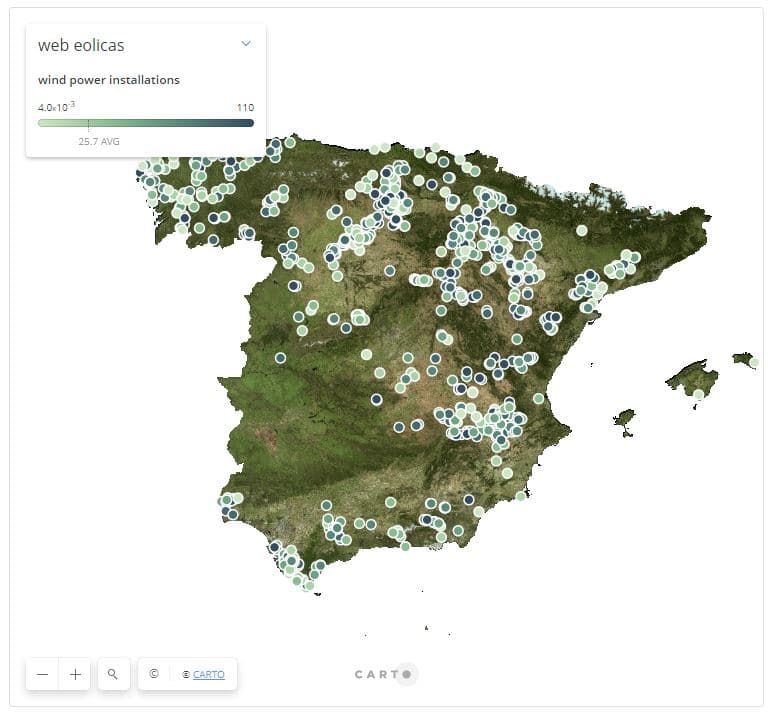-
Phone Number
-
Email Address
Wind power is that which is obtained from the constant force of the wind. As? Take advantage of kinetic energy produced by air masses. The Wind turbines convert the force of the wind into electricity.
Main features of the energy produced by the wind :
See the concept of renewable energy and its importance here
In Persia, wind power was used as a source of energy for the mills already in the sixth century of our era. In Europe, windmills are first used in the 18th century XII, mainly to grind the grain into flour.
🟧 At sea, the winds are stronger and constant. That is why they are preferred offshore wind projects. However, very little water is required deep to install a park wind.
Look at other energy sources renewables
Energy Marina
Energy Solar
Energy Geothermal
Energy Biomass
Energy Hydroelectric
Energy Tidal
Wave energy u wave
Biofuels
The extensive explanation of how a We can see the wind turbine in the following video:
What are the benefits and drawbacks of the sector? wind power
Advantages of wind energy
Disadvantages of wind energy
The main drawback of the energy sector wind is that it does not produce energy constantly since it depends on the flow of the wind and its persistence
Articles of interest
Video: Construction wind turbine
Infographics to understand the renewables
Check news on renewables
Wind power is that which is obtained from the constant force of the wind.
There are two main types of energy wind power: offshore wind power and energy onshore wind.
It is used to generate electricity which will be used in the residential sector, industry, etc.
By the force of the wind where uses the kinetic energy produced by the air masses.
The mini-wind is the renewable that take advantage of the force of the wind using small wind turbines with lower power to 100 kW intended more for the home environment for homes.
The amount of energy that can be producing modern wind turbines is between 40 and 50% efficiency. A wind turbine cannot capture all the energy of the wind, the theoretical limit is 59%. How much The larger the wind turbine, the greater its efficiency.
Wind turbines are built to be more efficient in a light wind, often about 12-14 meters per second. When a storm blows, the wind turbine goes out to protect you from stress excessive.
To build wind turbines, You need an environmental permit. Needed an environmental impact assessment in addition to the corresponding permits of the timely administrations.
Wind turbines have a height average of 80 – 120 meters. There are some with more 200 meters high.
A modern wind turbine can produce up to 15-20 GWh per year, depending on the wind conditions. More or less, corresponds to electricity consumption approximately 1,500 Spanish households per year.
Wind power is a source of completely fossil free energy and no create no pollution. With respect to animal world, can have a negative impact about the flight of birds.
The sound level is 40 dBA (decibels). used as practice regulations for wind turbines located near residential buildings. remembering Many factors influence the level sonorous; weather, prevailing winds, distance, etc.
The sound comes from the large blades of the rotor moving in the air. create a sound in "buzz".
At sea, the winds are stronger and constant. That is why groups are preferred. of wind turbines in high sea.
Spain is one of the countries with the most wind farms in the planet. The climate and innovative companies in the sector have achieved that the Spanish territory is optimal for new state-of-the-art technology facilities.
The following map shows the number of wind projects existing. More information can be consulted from our article to consult the potential of the wind in Spain.

Although we can already recognize that it cannot be used so quickly when we talk about high capacities of energy created by wind turbines «molinos "wind turbines" and turbines difficult to increase due to their size. Even so, statistics reveal that the construction of wind farms is upward.
It should be noted that Spain is the seventh country in wind power generation and fifth in capacity of the world as we can see in the following interactive table from International Renewable Energy Agency (IRENA). Filter by “Wind Energy”.
Which countries are betting more on wind energy? Clearly, China is the country with the most wind farms in the world. world and who is installing more wind capacity. You England and Germany follow.
The trends in the generation of wind electricity to global level we can see it in the following graph, also by country if we filter.
What is the evolution of wind energy in Europe? The countries with the highest installed capacity were the United Kingdom Kingdom, Sweden, Germany, Turkey and the Netherlands, for this order.
Sweden was the country that installed the most wind power terrestrial (2.1 GW). The UK installed most of new offshore wind power (2.3 GW).